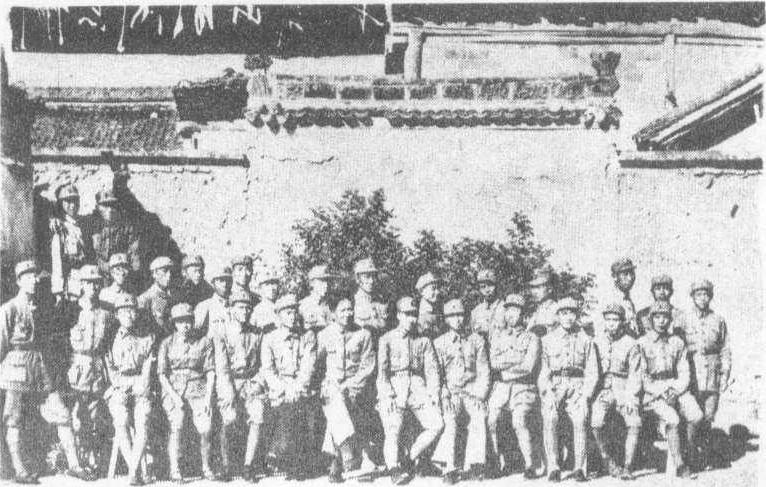井冈山革命根据地Jinggangshan geming genjudi
第二次国内革命战争时期毛泽东等创建的农村革命根据地。井冈山位于湘赣边界罗霄山脉中段。1927年10月,毛泽东率领秋收起义的部队到达井冈山地区,开始了创建农村根据地的斗争。11月下旬,工农革命军攻下茶陵县城,建立了湘赣边界第一个红色政权——茶陵县工农民主政府。随后,遂川、宁冈等县也先后成立了工农民主政府。到1928年2月,以宁冈为中心的井冈山革命根据地初步建立。
1928年4月,朱德、陈毅率领南昌起义保留下来的部队和湘南农军到达井冈山,在宁冈砻市同毛泽东领导的部队会师。5月4日,会师部队组成中国工农革命军第四军(后改称工农红军第四军),朱德任军长,毛泽东任党代表,下辖三个师六个团。红四军在毛泽东、朱德的正确领导下,多次打退反动军队的进攻。到1928年夏,井冈山革命根据地已扩大到宁冈、永新、莲花三个全县和吉安、安福、遂川、酃县各一部分,5月下旬,成立了湘赣边界工农兵政府。至此,井冈山革命根据地进入全盛时期。

参加井冈山斗争的部分同志1938年在延安合影
1928年12月,彭德怀率红五军主力到达井冈山与红四军会师,进一步壮大了井冈山革命根据地的红军力量。1929年1月,毛泽东、朱德率红四军主力向赣南、闽西进军,开辟新的革命根据地,红五军和红四军三十二团则留守井冈山。留下的红军,经过曲折的斗争,在井冈山革命根据地的基础上,建立了以永新为中心,包括宁冈、莲花、上犹、崇义等十几个县革命政权的湘赣革命根据地。
井冈山革命根据地,是中国第一个农村革命根据地。井冈山革命根据地的创建具有重大的政治意义,它把革命的退却和革命的进攻巧妙地结合起来,为中国革命开辟了一条以农村包围城市最后夺取城市的正确道路。
井冈山革命根据地
土地革命战争时期中国共产党领导创建的革命根据地之一,位于湘赣边界罗霄山脉中段。1927年10月,毛泽东等率领秋收起义部队开辟了井冈山根据地。1928年4月朱德、陈毅率领南昌起义余部和湘南农军到达井冈山,12月彭德怀等率领红五军到达井冈山,使根据地不断巩固和扩大。
井冈山革命根据地
第二次国内革命战争时期,毛泽东等创立的全国第一个农村革命根据地。1927年10月,毛泽东率领湘赣边界秋收起义的部队到达井冈山地区,先后在宁冈、永新、茶陵、遂川等县恢复和重建中共党的组织,同时分兵发动群众,打土豪、分田地,团结改造地方武装,发展革命力量,开展游击战争,建立农民协会和各级民主政权,创立了井冈山革命根据地。1928年4月,朱德、陈毅等率领南昌起义保留下来的部分队伍和湘南起义中组建的农军到达井冈山地区,在宁冈砻市与毛泽东领导的部队会师,正式组成了中国工农红军第四军。同年6月取得龙源口大捷,将根据地扩大到包括宁冈、永新、莲花3县全境和吉安、安福、遂川、酃县各一部分,达到全盛时期。12月,鼓德怀、滕代远等率领红五军主力到达井冈山,进一步壮大了根据地的武装力量。1929年1月,毛泽东、朱德率红四军主力向赣南、闽西进军,开辟新的革命根据地,留下部分部队继续坚持井冈山地区的斗争,以后通称湘赣革命根据地。